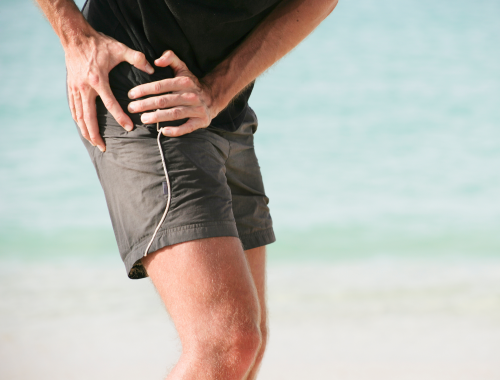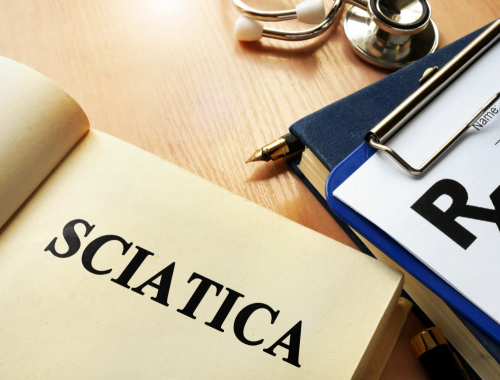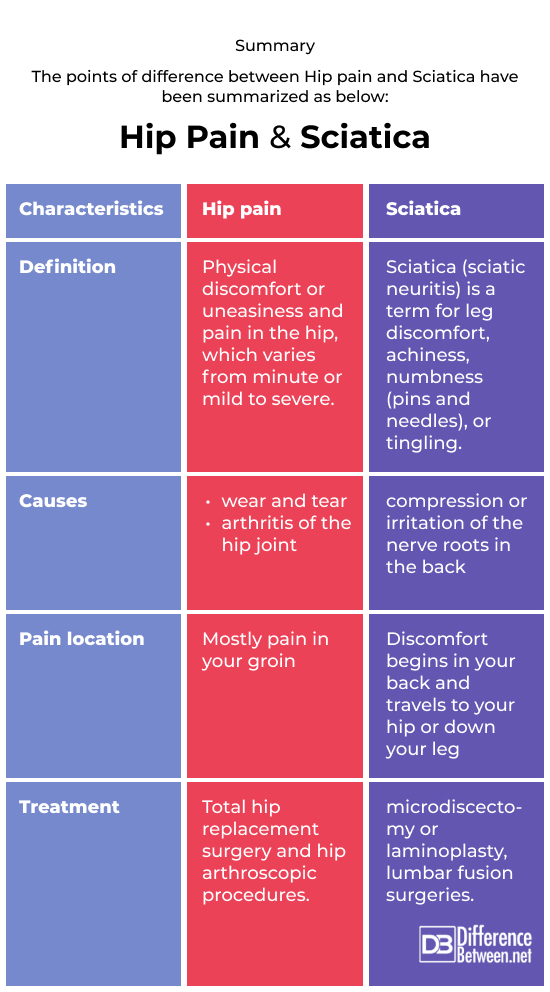Difference Between Hip Pain and Sciatica

Hip arthritis (cartilage in your hip joint to become thin and fragile and there is lot of inflammation in the hip joints) brought on by wear and tear is a prevalent cause of hip pain. Compression (squeezing) or irritation of the nerve roots in the back causes a pinched nerve (radiculopathy) or sciatica. Despite the similarity in how both illnesses may initially appear, proper therapy depends on their differentiation.

Similarity
Both conditions cause pain in the back and are classifications of
Hip pain
Hip pain from a pinched nerve (radiculopathy) can cause pain in the hip area. It can also be caused by arthritis brought on by wear and tear. Compression (squeezing) or irritation of the nerve roots in the back causes a pinched nerve (radiculopathy).
Sciatica
Sciatica (sciatic neuritis) is a term for leg discomfort, achiness, numbness (pins and needles), or tingling. It is brought on by pressure, compression or damage to the sciatic nerve (starts in the lower back and travels down the back of each leg). Sciatica is an indication and a sign of a health problem. It is not a disease/illness in and of itself.
Difference between Hip pain and Sciatica
Definition
Hip pain
Hip pain is caused by the thinning of the cartilage in the hip joint. It also results from inflammation in the hip joints due to wear and tear of the cartilage
Sciatica
Sciatica (sciatic neuritis) is a term for leg discomfort, achiness, numbness (pins and needles), or tingling.
Causes
Hip pain
- Infection in the hip joints and hop bones
- Hip pain is also cause due to hip fractures
- Osteonecrosis of the hip (the death of bone tissue due to a lack of blood supply)
- Arthritis
Sciatica
Overgrowth of bone
- a herniated disk in the spine
- Cauda equina syndrome.
- herniation from age-related changes in the spine
- Muscle spasms compressing the sciatic nerve
- Conditions caused by spinal degeneration, such as spinal stenosis
- Conus medullas syndrome.
- Pregnancy
Treatment
Hip pain
Hip disease typically depends on the patient’s age and diagnosis. Advanced arthritis (cartilage is totally worn away) and avascular necrosis (the death of bone tissue due to a lack of blood supply) are often treated with a total hip replacement surgery (an operation to remove a damaged hip joint and replace it with artificial parts). Hip arthroscopic operations may be beneficial for younger patients with mild arthritis.
Sciatica
- Cold packs
- Hot packs – apply heat to the areas that are sore and hurt
- Stretching
- Medications to give relief from the pain
Summary
The points of difference between Hip pain and Sciatica have been summarized as below:

FAQ:
How do I know if I have sciatica or hip pain?
Hip issues, such as hip arthritis (pain in or near the hip joint, stiffness), frequently result in groin pain (sports hernia) or pain when you bear weight on or move your leg. Sciatica (pain impacting the back, hip, and outer side of the leg) is the most likely reason if your uneasiness begins in your back and travels or radiates to your hip (the area below the waist) or down your leg, or if you have numbness (a loss of feeling in a part of the body), tingling, or weakness.
Can hip pain be mistaken for sciatica?
Your movement may change as a result of the pain, which could put further strain on your already-tired hips. Therefore, the two are probably connected if your hip pain is more of a dull ache (chronic or persistent pain) and you’re also exhibiting some of the more typical symptoms of sciatica.
Where is hip pain usually felt?
Any discomfort in or around the hip joint is referred to as hip pain. It’s possible that you won’t immediately have hip pain there. You can get pain in your thigh or knee in addition to your groin.
How do I know if my hip pain is nerve pain?
Usually, a pinched nerve (radiculopathy) in the hip causes hip discomfort that gets worse when you walk or move about. Additionally, you can feel numbness (a loss of feeling in a part of the body or pins and needles sensation) travel down your leg. Another typical sign of a pinched nerve (radiculopathy) in the hip is tingling (a condition called paresthesia), or a feeling of being on pins and needles.
How can I test myself for sciatica?
SLR test, or straight leg raise test can be done to test for sciatica. The patient can lie down upside down or on his or her back for this examination, elevating one leg at a time while keeping the other flat or bent at the knee. Sciatica is typically diagnosed when the affected leg hurts when it is lifted.
What is the best thing for sciatica pain in the hip?
- Stretching
- Medications
- Ice and heat therapy – use ice therapy for the first few days of a pain flare, then use heat therapy
- Over-the-counter medicines. Nonsteroidal anti-inflammatory drugs (NSAIDs)
- Difference Between Global Warming and Greenhouse Effect - May 18, 2024
- Difference Between Vaccination and Immunization - March 3, 2024
- Difference Between Selective Mutism and Autism - February 25, 2024
Search DifferenceBetween.net :
Leave a Response
References :
[0]Bedi, A., Dolan, M., Leunig, M., & Kelly, B. T. (2011). Static and dynamic mechanical causes of hip pain. Arthroscopy: The Journal of Arthroscopic & Related Surgery, 27(2), 235-251.
[1]Ropper, A. H., & Zafonte, R. D. (2015). Sciatica. New England Journal of Medicine, 372(13), 1240-1248.
[2]Tibor, L. M., & Sekiya, J. K. (2008). Differential diagnosis of pain around the hip joint. Arthroscopy: The Journal of Arthroscopic & Related Surgery, 24(12), 1407-1421.
[3]Valat, J. P., Genevay, S., Marty, M., Rozenberg, S., & Koes, B. (2010). Sciatica. Best practice & research Clinical rheumatology, 24(2), 241-252.
